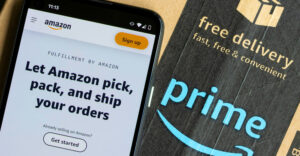There were 4,521,480,071 Internet users as of Dec. 1, 2019. A month later it was closer to 5 billion users. A decade ago there were fewer than a billion social network users. That’s worldwide. That user growth has been a leading indicator of the rise of alternative social networking platforms.
Marketers — and consumers — are always on the lookout for the newest thing with which to engage. For consumers, it’s social outreach and sharing. For marketers, it’s commerce and sharing. So, the scale of what’s available to consumers in both social and retail platforms is huge — and more and more alternative platforms are on the way.
It’s all because of consumers’ online behavior. Welcome to the marketing Mbius strip: Growth in consumer online activity leads to increased expectations, which leads to newer alternative social and retail platforms built to meet those expectations, which increases consumer activity, which leads to more frequent online activity accompanied by increased expectations, which leads to. . . well, you get the point.
You’re probably living the point right now. This behavior and the experiential nature of consumers’ social and retail behaviors have become more and more commonplace, along with increased expectations.
Depending upon the category you’re looking at, consumer expectations grow within a range of 18 percent to 25 percent a year. Brands only manage to keep up by about 5 percent to 7 percent, which leaves a really big gap between what those 4 billion-plus Internet users expect and what brands actually are able to deliver.
One thing that hasn’t changed is the fact that nature abhors a vacuum. Empty space is unnatural and needs to be filled. That’s physics. The need for more and more platforms so that consumers are able to meet their ever-expanding expectations? That’s marketing.
New, alternative platforms are created to try to meet those ever-growing expectations, but expectations are like an oil spill. A spill in one place does not remain isolated. It spreads from one category to another, and thus new expectations beget newer expectations, and online social and online retail have begun to intermingle.
Shoppable Social Strategies
Consumers live online. They shop online. They share online. They learn online. What they’ve shared and learned — and what has become part-and-parcel of their lives — is that they have access to virtually everything. Now! When they have questions, they search. However, expectations are such that they actually don’t want to search for something when they see it online. They want to be able to tap on an image and have access to it. Now!
Where is it? What’s in it? What products are those? What clothes are those people wearing? How much do they cost? Where can I find it? They want what’s become known as “shoppable posts.” Tap on an image and know everything about it. That’s what they expect — and now, or very soon.
Core business-to-consumer platforms like Twitter, Facebook and Instagram, and business-to-business platforms like LinkedIn, are not meeting consumer expectations, but all of them are adopting or currently developing shoppable strategies to make them more competitive with the likes of Amazon and Jd.com.
Yes, the addition of more pay-to-play platforms means engagement will be more problematic. Alternative e-commerce platforms like TikTok will allow brands to engage consumers who are already migrating or planning to migrate from older platforms that don’t meet their expectations to newer alternatives that do.
One thing consistent throughout marketing history is that you don’t want to disappoint your consumer. These days, the abundance of options means consumers are not likely to give social or retail sites that disappoint them another chance. Why should they?
Their expectations will force them to seek out competitive options on alternative platforms or force brands to offer shoppable content experiences to their consumers across every touchpoint the brand uses to engage the consumer.
In a maturing digital/online/social/retail marketplace, tech companies are working very hard to make everything more transactional. Shoppable posts become the off-ramp for having to shop in a store.
Social E-Commerce Synergy
TikTok’s ads have a “shop now” button connected to user-generated content that redirects users to a microsite. Instagram introduced a program that allows retailers with the Shopify network to embed point-of-sales items in their posts. Tap on an item, the price comes up. Tap on a price, more product information comes up. Tap on the link, and you just shopped!
Ninety-two percent of recently polled Pinterest users felt the platform helped them make purchasing decisions. Over the past two years, all the major players have been creating formats allowing online users to make purchases in the creative itself. That’s even if they weren’t initially online to shop, but just to share.
From a retail perspective, analytics should be able to point the way to prioritize the products retailers want to make shoppable. It’s also going to necessitate finding ways to blend social and retail seamlessly, because the truth is that most of what’s out there and what engages consumers is broader (and less specific) than retail alone.
Today, engagement is about awareness and emotion, and awareness and emotion form the doorway for making something desired — and thus, eminently sociable — sharable and shoppable. The idea of shoppable posts gives consumers the opportunity to buy immediately.
Five years ago, marketers might have suggested that consumers would need time to get used to the idea of shopping on mobile devices. With more than 85 percent of U.S. shoppers making purchases online, it’s a given. With expectations also a given, it will be the tap-on-your-platform-of-choice trend for the foreseeable future.
New platforms able to accommodate the entire sales process — or at the very least facilitate the sales process — will have the added advantage of providing visitation and advertising efficacy.
While this is a very big trend and an even bigger idea, brands should start small. Retailers should start with their own social networking efforts and websites. Remember those 4 billion-plus online consumers? With the continuing growth of social media and e-commerce, synergy between the two is going to be massive. That fusion will be the next big thing for social media, particularly for the new social networking platforms coming down the road.
Native integration will make it easy for consumers to tag and shop products, and will make finding product pages easier, more instinctive, and more immediate — all of which promises to make online experiences more relevant, more engaging, more customizable, and more profitable for more shoppable ads.














































Social Media
See all Social Media